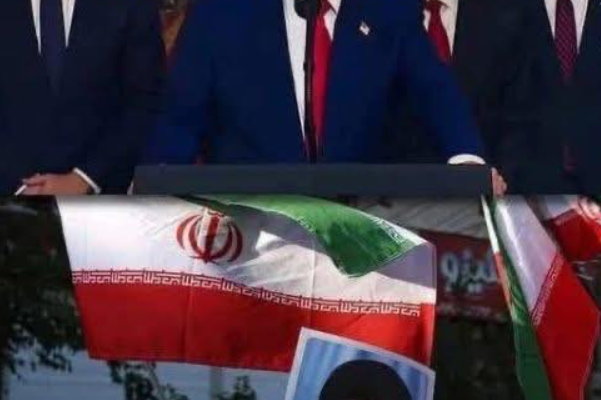⚠️ The Iran–U.S. Crisis: A 2025 Flashpoint
🔥 Operation Midnight Hammer: The Catalyst
On June 22, 2025, the United States launched a surprise military operation—code-named Midnight Hammer—targeting three of Iran’s most critical nuclear sites: Fordow, Natanz, and Isfahan. The strikes were carried out using stealth bombers and submarine-launched Tomahawk missiles, aiming to cripple Iran’s nuclear capabilities amid rising fears of weaponization.
President Donald Trump, who authorized the operation, declared the mission a “complete obliteration” of Iran’s enrichment infrastructure. While the Pentagon reported “extremely severe damage,” Iran’s initial response was mixed—ranging from denial of irreversible harm to later admissions of “significant and serious damages”.
🌍 Global Reaction and Iranian Fury
The international community responded with alarm. While some allies quietly supported the move, others—including members of the European Union—expressed concern over escalation. Iran’s Foreign Minister Abbas Araghchi condemned the strikes as a “heinous crime” and warned of “everlasting consequences”.
Iran’s President Masoud Pezeshkian accused the U.S. of colluding with Israel and labeled Washington the “primary instigator” of regional instability. The Iranian government demanded an emergency session of the U.N. Security Council, citing violations of international law and threatening “unprecedented chaos” if the global community remained silent.
🛰️ Iran’s Military Posture and Strategic Options
In the wake of the U.S. strikes, Iran retaliated by targeting the Al Udeid Air Base in Qatar, a key American military installation. Though damage was limited, the move signaled Iran’s willingness to respond militarily. Analysts believe Iran may now be weighing further retaliation, including cyberattacks, proxy strikes via allied militias, or even direct action.
However, there is no confirmed intelligence suggesting an imminent strike on U.S. soil. Iran’s military doctrine traditionally avoids direct confrontation with the U.S. mainland, favoring asymmetric warfare and regional influence.
🧠 Disinformation and Panic: The Role of Viral Rumors
The claim that Iran will strike America “tonight” and begin with a specific state appears to stem from unverified social media posts and speculative commentary, not official sources. In times of geopolitical tension, misinformation spreads rapidly—often fueled by fear, political agendas, or sensationalism.
It’s crucial to rely on credible news outlets, government briefings, and verified intelligence assessments. Panic-driven rumors can cause unnecessary distress and even disrupt emergency services or public safety operations.
🛡️ U.S. Homeland Security and Preparedness
The Department of Homeland Security (DHS) and the Pentagon have not issued any public warnings about an imminent Iranian attack on U.S. soil. However, they remain on high alert, especially regarding:
- Cybersecurity threats targeting infrastructure, financial systems, and communications.
- Terrorist proxies potentially operating through Hezbollah or other Iranian-backed groups.
- Disruption of oil supply chains, particularly through the Strait of Hormuz—a critical chokepoint Iran has threatened to block.
The U.S. military maintains robust defense systems, including missile interceptors, NORAD surveillance, and rapid response units, to counter any direct threat.
🕊️ Diplomatic Channels and the Fragile Peace Window
Despite the escalation, diplomatic efforts continue. The International Atomic Energy Agency (IAEA) has urged both sides to return to negotiations, warning that failure could lead to “unthinkable levels of destruction”. Russia and China have called for restraint, while European leaders are pushing for a renewed nuclear deal.
Iran’s leadership has hinted at further retaliation but also expressed interest in avoiding full-scale war. The next few weeks will be critical in determining whether diplomacy can prevail over militarism.
🧭 Historical Echoes: Lessons from Past Conflicts
This crisis echoes past flashpoints—like the 1979 hostage crisis, the 1988 downing of Iran Air Flight 655, and the 2020 assassination of General Qasem Soleimani. Each event triggered intense backlash but ultimately stopped short of full war.
The current situation is unique in its scale and timing. With nuclear facilities damaged and regional alliances shifting, the stakes are higher than ever. But history suggests that even in moments of extreme tension, cooler heads can prevail.
🧓 Voices of Reason: Civilian Impact and Public Sentiment
In both Iran and the U.S., civilians are caught in the crossfire of political decisions. Iranian citizens face economic hardship, sanctions, and fear of further strikes. Americans worry about national security, energy prices, and the possibility of war.
Public sentiment in both countries leans toward de-escalation. Many Iranians oppose their government’s nuclear ambitions, while many Americans question the legality and wisdom of unilateral military action. These voices matter—and they often shape the long-term trajectory of conflict.
🧮 What Comes Next? Scenarios and Possibilities
Here are three plausible paths forward:
1. Escalation and Retaliation
Iran could launch further attacks on U.S. assets in the Middle East or attempt cyber sabotage. The U.S. might respond with more strikes, leading to a regional war.
2. Diplomatic Reset
International pressure could force both sides back to the negotiating table. A new nuclear deal might emerge, with stricter inspections and mutual concessions.
3. Cold War Stalemate
Both nations might settle into a tense but stable standoff, with proxy conflicts and sanctions continuing but no direct confrontation.
🧘 Final Thoughts: Stay Informed, Stay Calm
While the situation is serious, there is no verified evidence that Iran will strike the U.S. tonight or target any specific state. It’s vital to remain calm, avoid spreading unconfirmed rumors, and follow trusted news sources.
Geopolitical crises are complex, and fear can cloud judgment. But knowledge, vigilance, and empathy can help us navigate even the darkest moments.



